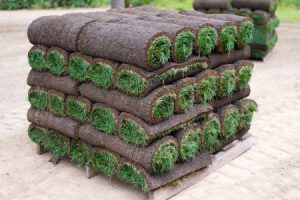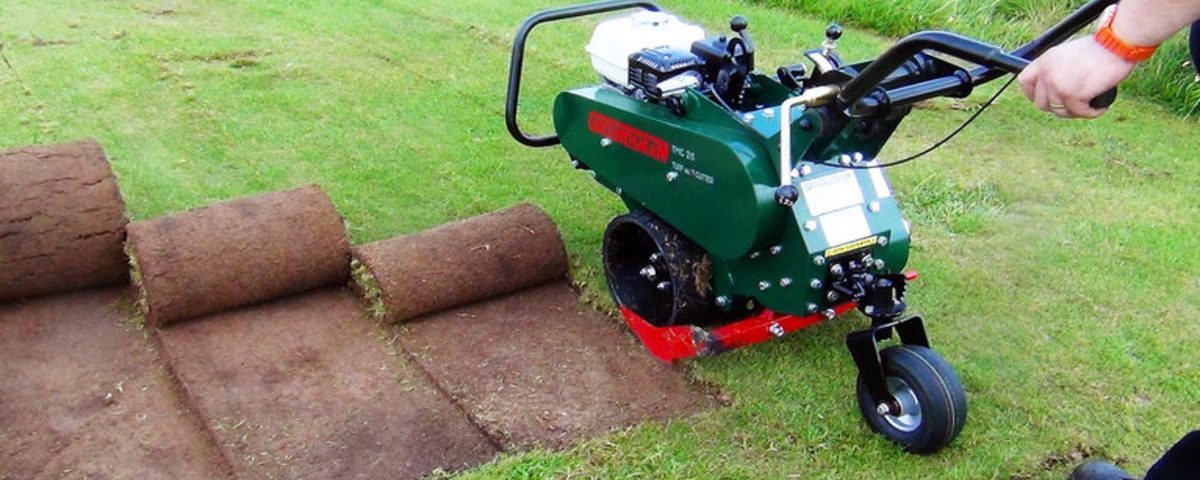
Our Clients:

Why Choose Sod, Seeding or Hydroseeding For Your New Lawn?

Hydroseeding: Cost-Effective Soil Erosion Control
September 21, 2020
What Is The Best Time of Year to Lay Sod?
December 1, 2021A common desired component of a landscape is to have a well-maintained and lush lawn area. There are many ways to do this; the decision will be determined by the time of year, your budget and your ability to make things grow. This blog gives you three good options (Sod grass, Seeding, and Hydroseeding) to consider when developing a new lawn.
Site Selection
If you are replacing a lawn, do a little homework to figure out why your previous lawn might have failed; as they say, “History tends to repeat itself.”
Here are some examples of questions you might want to think about: Was the lawn abused? Are there at least 4 to 6 hours of sunlight year-round? Is the soil compacted or of poor quality?…
Choose your method
Seeding involves applying a grass seed mixture or a grass seed and mulch mixture to a prepared seedbed. With the right conditions, the grass seed germinates and begins to grow and, with time and proper care, will thicken into a lawn over a period of 2 to 3 months. The mulch in hydroseeding helps retain moisture, helps keep the seed in place and protects the seed from wind and birds. On the other hand, sod involves installing grass that has been grown in a thick, dense mat. The sod is sold in 2’ X 5’ strips rolled up for easy handling. All three processes involve the same steps for preparation.
Timing?
Sod can be installed year-round, while seed requires at least a 53-degree soil temperature for germination. The best time to seed is during the fall season. Seeding in the spring is also good but will require more water through the summer. If the immature plants are allowed to dry out for even a few hours after germination, they will shrivel and die.
What are the benefits of sod over traditional seeding?
You stand to enjoy numerous benefits if you decide to choose sod as a means of establishing a thriving lawn. Some of the main advantages include:
Quick results
One of the major reasons landscapers rush to sod when establishing lawns is its fast growth rate. A sod lawn can be installed in just a few hours with instant curb appeal and could be fully ready for use within a couple of weeks, whereas it could take weeks before you see any results from seeding and can take months before reaching full maturity. This will end up saving you precious time and effort while ensuring you end up with a beautiful lawn.
Long-term investment
Sod installation can happen all year round and requires only one day for this. Unlike seeding, sod does not need you to dedicate time throughout multiple weeks. Sod also establishes itself quickly and will appear like a healthy lawn within days.
Erosion control
Sod installation is a great way to control erosion when heavy rains hit your area. It can handle the water flow and maintain its integrity throughout all weather conditions.
Fewer weed attacks
A healthy lawn is the best defense against weeds; starting with sod and keeping it well maintained will minimize the occurrence of weeds taking over the lawn.
Watering
Sod must be watered extremely heavily immediately upon installation since it has lost its root structure during the harvest. During the growing season, the sod will root down in one to two weeks, and after one month, the watering can begin to taper off. It will require significant watering but not as much or for as long as a seeded lawn. Watering is the element that causes most lawn installations to fail, whether it be seeding or sod. All of this varies with the seasonal weather conditions upon installation, of course.
What are the downsides of Sod installation?
There are a few minor downsides to sod that you should be aware of before making your decision.
Initial investment
Sod is very affordable; however, it may not suit every project. A key factor in this will be the actual lawn size; the smaller the lawn, the lower the difference. Keep in mind, you may want to sod a small area and use a matching seed for those areas where seeding is a better value.
Short transplant window
When you consider laying sod on your property, it is essential to note that the sod must be installed the day you receive it. If left rolled up or on the pallet, it will build internal heat and begin to decompose immediately.
Limited grass choices
For those planning to install custom grass types or wildflowers in your lawn, sod may not be the best option. For versatility in the Northwest, our sod is made up of three cool-season grass types: Perennial Ryegrass, Kentucky Bluegrass and Hard Fescue. Though there are easier mixes to grow, we find this to be the very best combination for our customers.
Should I select sod or seeding?
If you are looking for a quick and easy way to landscape your yard, grass is a great way to cover some ground. It grows quickly while saving money and time in the long run! Seeding and sod installation are both excellent DIY projects, though landscape contractors also perform the work. Country Green does the hydroseeding, and you can choose to have a contractor do the preparation or make it a DIY and have us come out and spray the material. Sod offers many benefits like initial erosion prevention that seeding does not provide; however, there are some downsides such as initial cost and lack of customization.
The following tool may help weigh the decision.
Conclusion
It all boils down to the project timing, size, budget, and comfort level when growing the lawn from scratch. At Country Green Turf Farms, we have qualified technicians and products to help you with whichever choice you make, be it sod, seeding or hydroseeding. Call us today!










